Honey is good for you when used in moderation, and research shows it may support overall wellness in several ways. It provides natural antioxidants, quick energy, and various bioactive compounds that may benefit digestion, immunity, hydration, and everyday wellness.
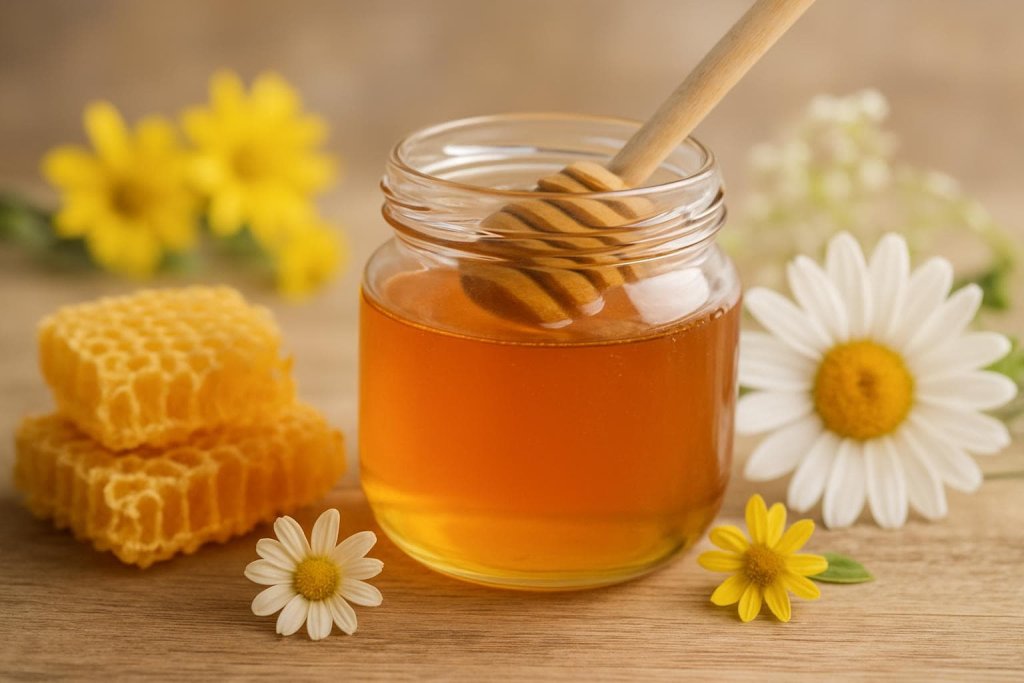
Understanding the health benefits of honey helps you choose the right type, use it safely, and avoid common mistakes—especially because honey is still a form of sugar. This guide explains evidence-based benefits, nutrition facts, safety considerations, and simple ways to add honey to your routine.
For the latest guidance, you can also review resources from organizations such as the Mayo Clinic, Cleveland Clinic, and the U.S. National Honey Board.
What Is Honey? (Overview and Nutrition Profile)
Honey is a natural sweetener produced by honeybees from the nectar of flowering plants. Bees collect nectar, break it down with enzymes, and store it in honeycombs where it thickens into the concentrated substance we know as honey. Its composition varies by floral source and region, which is why different honey types have distinct flavors, aromas, and antioxidant levels.
From a nutritional standpoint, honey is primarily a source of natural sugars, mainly fructose and glucose. It also contains small amounts of minerals, amino acids, enzymes, and plant-based antioxidants. While honey is not a significant provider of vitamins or minerals per serving, it offers more natural compounds than refined sugar, making it a more nutrient-dense sweetener when used in moderation.
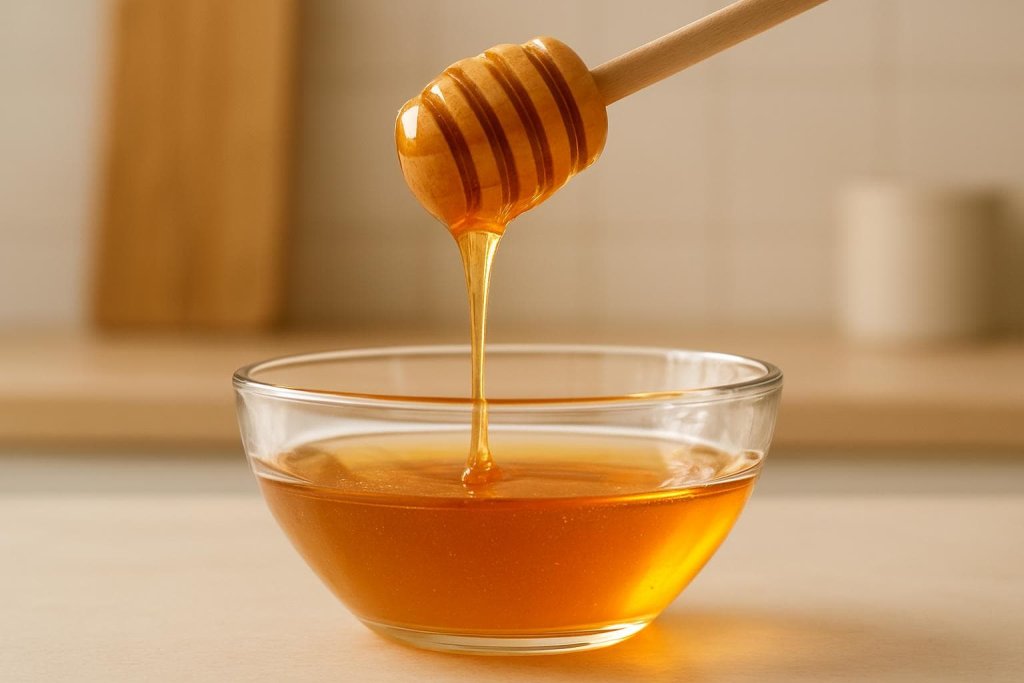
Nutrition Profile (Per 1 Tablespoon / 21 g)
According to USDA FoodData Central:
- Calories: ~64
- Carbohydrates: ~17 g
- Sugars: ~17 g (primarily fructose + glucose)
- Protein: 0 g
- Fat: 0 g
- Fiber: 0 g
- Trace minerals: small amounts of potassium, magnesium, calcium
- Bioactive compounds: flavonoids, phenolic acids, natural enzymes
Honey’s natural antioxidants and phytonutrients may support overall wellness, though it should still be consumed mindfully due to its sugar content. When added to balanced meals—such as yogurt, oatmeal, or herbal teas—it can contribute flavor and subtle nutritional benefits.
10 Proven Health Benefits of Honey (Backed by Science)
Honey offers a unique combination of natural sugars, antioxidants, and bioactive compounds that may support overall wellness. When used in moderation, honey can be a valuable addition to a balanced nutrition plan.
1. Rich in Antioxidants That May Support Cellular Health
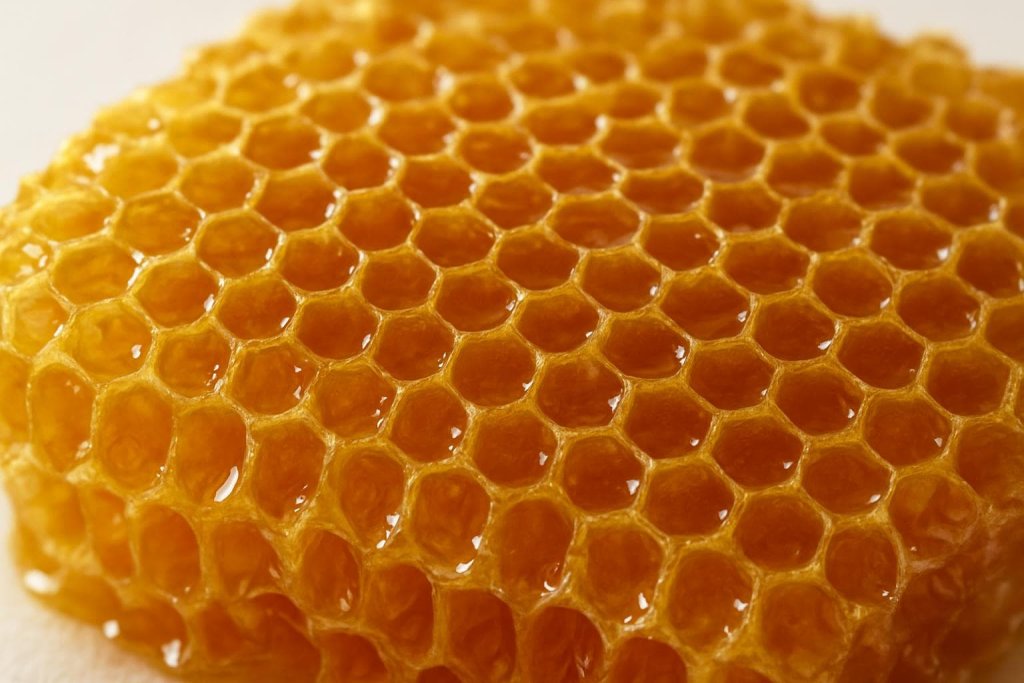
Honey contains a diverse range of polyphenols, including flavonoids and phenolic acids, which have been widely studied for their antioxidant activity. These compounds may help neutralize free radicals—unstable molecules that contribute to oxidative stress.
Research from the National Library of Medicine highlights that honey’s polyphenols may support long-term cellular health by maintaining a balanced oxidative environment in the body.
Antioxidants play an important role in everyday wellness, supporting normal aging processes and helping your body respond to environmental stressors.
2. May Support Healthy Cholesterol Levels When Replacing Sugar
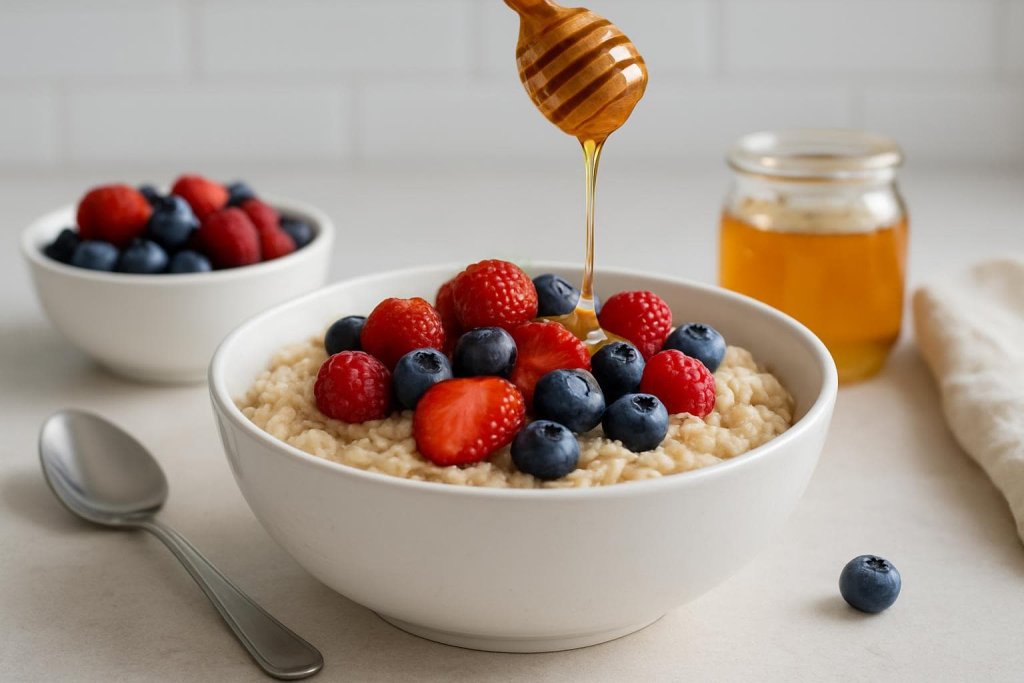
Replacing refined sugar with moderate amounts of honey may support more favorable lipid markers. Several controlled studies show improvements in total cholesterol, LDL (low-density lipoprotein), HDL (high-density lipoprotein), and triglycerides when honey is used as part of a balanced diet.
A review published in Nutrition Reviews found that raw or minimally processed honey may positively influence cardiometabolic markers when used in place of high-glycemic sweeteners. These findings emphasize honey’s potential role in heart-healthy dietary patterns, though portion control remains important.
3. May Help Soothe Coughs and Throat Discomfort

For adults and children over one year old, honey may help ease mild coughs and throat irritation.
The World Health Organization (WHO) and American Academy of Pediatrics (AAP) acknowledge honey as a natural option to help soothe cough symptoms in children older than 12 months.
The Cleveland Clinic notes that honey may coat the throat and help reduce nighttime coughing in certain situations.
This makes honey a widely used household remedy—safe for adults and older children—when added to warm water, lemon, or herbal tea.
Important: Do not give honey to infants under one year due to the risk of botulism.
4. Supports Digestive Wellness
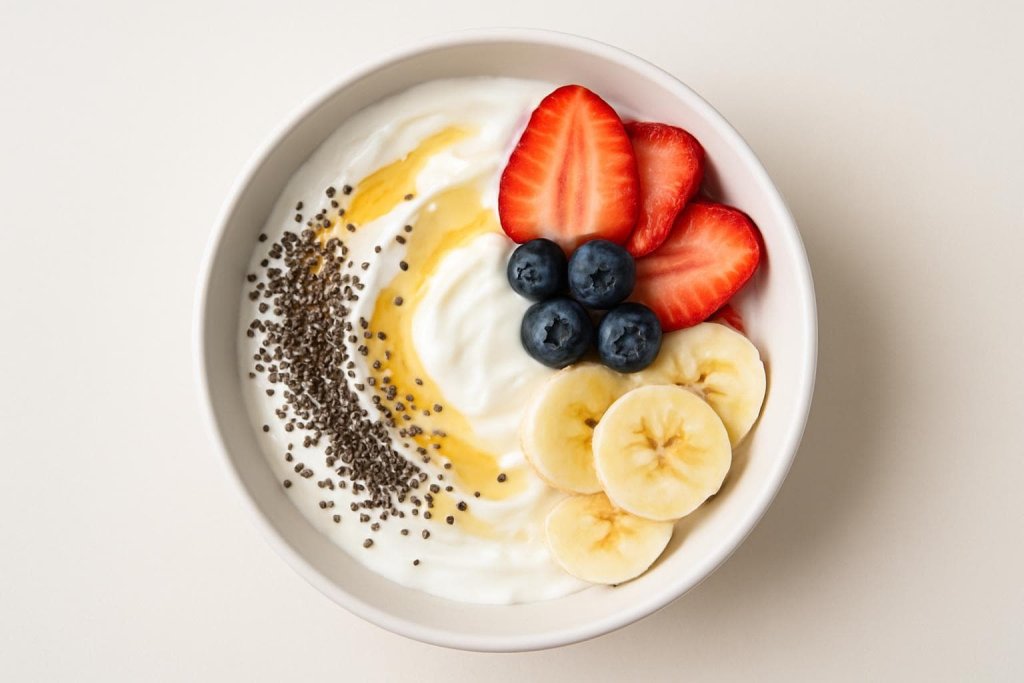
Honey contains natural prebiotic-like compounds, such as oligosaccharides and polyphenols, that may help support a healthy gut microbiome. These components can encourage the growth of beneficial bacteria in the digestive tract.
A review in Frontiers in Nutrition highlights the potential role of honey in promoting microbial balance, which may support smoother digestion and nutrient absorption within a well-rounded diet.
While honey is not a therapy for digestive disorders, its gentle prebiotic effects make it a helpful addition to meals like yogurt, oats, or warm beverages.
5. Provides Quick, Natural Energy

Honey supplies easily absorbed carbohydrates—mainly glucose and fructose—that the body can rapidly convert into energy. This makes honey a practical option for individuals needing quick fuel, such as students, workers, or athletes.
The National Honey Board explains that honey’s carbohydrate profile can support endurance activities and help replenish energy stores before or during exercise.
Many runners and cyclists use honey packets or add a teaspoon to water as a natural alternative to commercial energy gels.
6. Contains Natural Antimicrobial Compounds

Certain honey varieties, especially Manuka honey, contain compounds such as methylglyoxal (MGO) that show antimicrobial activity in laboratory settings. These compounds may help inhibit certain bacteria and contribute to honey’s long-standing use in wellness traditions.
The National Institutes of Health (NIH) has published research demonstrating honey’s antimicrobial potential in controlled studies.
While honey shows promising activity in research environments, these effects do not replace standard medical care.
7. May Support Skin Comfort When Used Properly
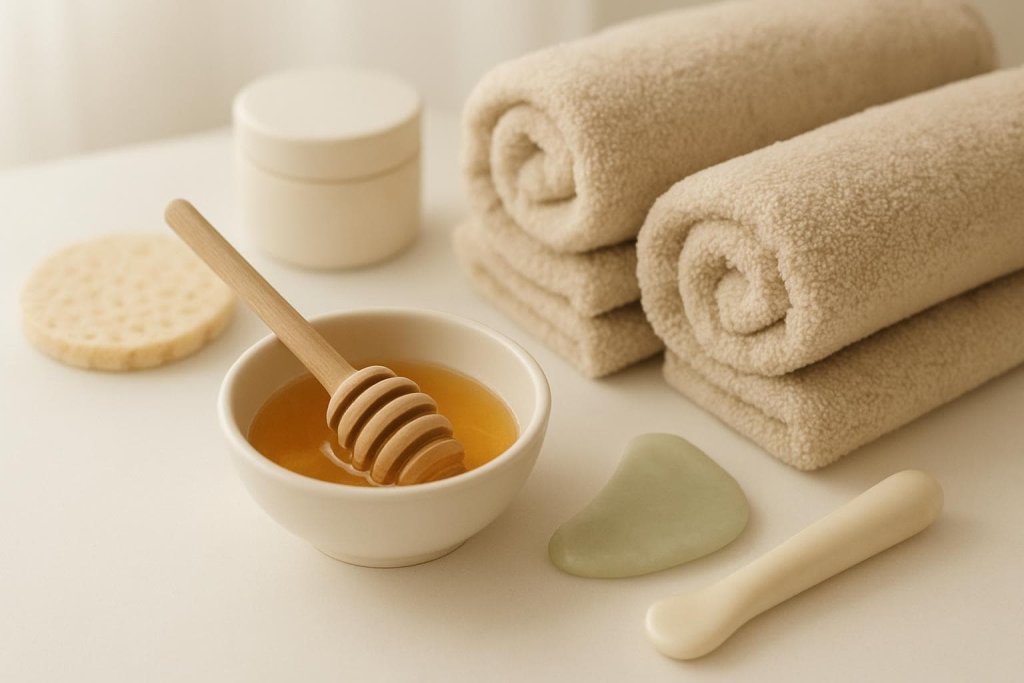
Honey’s natural humectant properties help attract and retain moisture, making it a popular ingredient in skincare products formulated to support hydration and skin barrier comfort.
Cosmetic formulations may include honey to improve texture, soothe dryness, and promote a soft, balanced complexion.
In clinical environments, medical-grade honey—which is sterilized and regulated—is used on wounds under professional guidance. Regular grocery-store honey should not be used for medical purposes, but it may be found in safe cosmetic products for daily moisturization.
8. May Support a Balanced Inflammatory Response
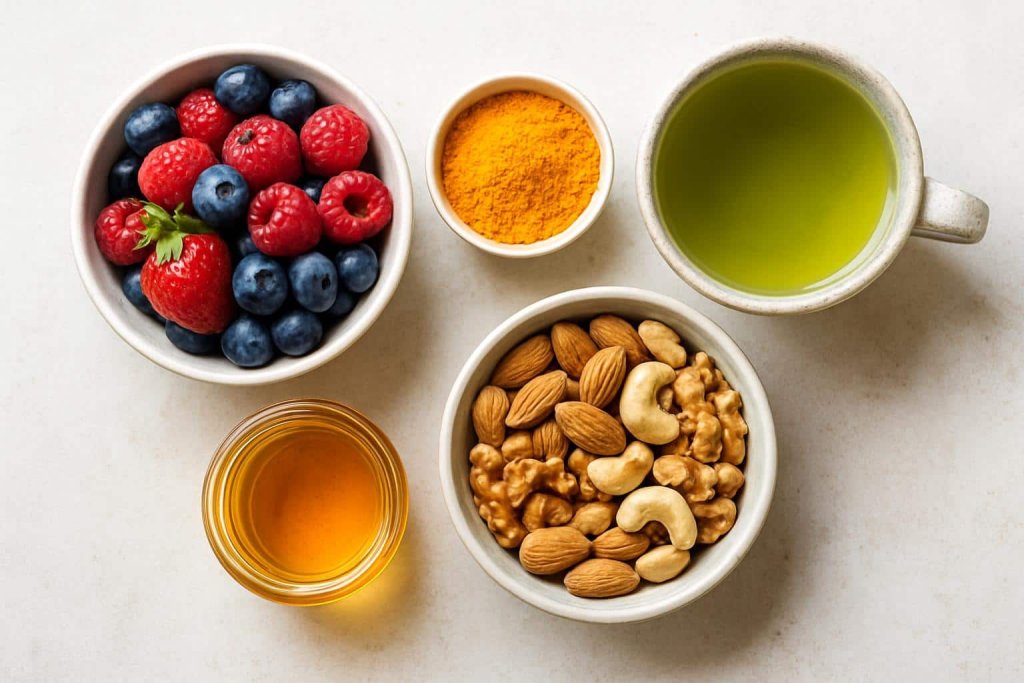
Several studies suggest that honey’s antioxidants may support the body’s natural inflammatory response. Polyphenols found in honey may influence pathways linked to inflammation, including NF-κB and MAPK signaling, according to scientific literature published through the National Library of Medicine.
When consumed as part of a diet rich in fruits, vegetables, nuts, whole grains, and other antioxidant-rich foods, honey may contribute to overall wellness and daily balance.
9. More Nutrient-Dense Than Refined Sugar

Honey provides more than just sweetness. It contains small amounts of enzymes, trace minerals such as potassium and magnesium, and naturally occurring antioxidants—not typically found in refined white sugar.
Although honey is still a form of sugar and should be consumed in moderation, its richer nutrient profile may support better dietary balance when used sparingly. This makes it a flavorful option for sweetening drinks or foods without relying on highly processed sugars.
10. Versatile and Easy to Add to a Healthy Diet

One of honey’s greatest strengths is its versatility. Its natural sweetness and smooth texture allow you to use smaller amounts while still achieving desired flavor.
You can easily add a small drizzle of honey to:
- Herbal tea or warm water
- Whole-grain oatmeal
- Smoothies
- Salad dressings
- Greek yogurt or cottage cheese
- Marinades for poultry or vegetables
Because honey pairs well with nutrient-dense foods, it can help enhance flavor while supporting moderation and mindful eating.
Possible Side Effects and Precautions
Honey is safe for most healthy adults when consumed in moderation, but several important precautions apply. Because honey is a natural sugar and a raw agricultural product, it must be used responsibly—especially in vulnerable groups.
Infant Botulism Risk
Honey should never be given to infants under 12 months.
It may contain Clostridium botulinum spores, which can cause infant botulism, a rare but serious condition.
Authoritative guidance from the Centers for Disease Control and Prevention (CDC) clearly states that infants under one year should not consume honey.
Blood Sugar Considerations
Honey still raises blood glucose levels. Individuals with diabetes or prediabetes should count honey as part of their total carbohydrate intake.
Using small servings (e.g., 1 teaspoon) and pairing honey with protein or fiber-rich foods may support better blood sugar balance.
Tooth Health
Honey is sticky and sugar-dense. Consuming it frequently, especially without proper oral hygiene, may increase the risk of dental plaque and tooth decay. Brushing teeth after meals and limiting sticky, sugary foods can support oral health.
Allergies
Although rare, some individuals may experience sensitivity to honey due to pollen residues or bee-related components. Mild reactions may include itching or digestive discomfort. Anyone with suspected sensitivity or a history of pollen allergies should monitor intake and discontinue use if symptoms appear.
Safe Topical Use
Only medical-grade, sterilized honey is suitable for wound or burn care and should be used under professional guidance. Grocery-store honey is not sterile and should not be used for medical purposes.
For information on medical-grade use, refer to the National Institutes of Health (NIH) overview of honey in clinical care.
Portion Control
Honey is more nutrient-dense than refined sugar, but it remains a concentrated sweetener. For most adults, 1–2 teaspoons at a time is reasonable. Excessive intake contributes to unnecessary calories and added sugars.
How to Choose High-Quality Honey

Selecting the right honey ensures better flavor, fewer additives, and higher antioxidant potential. Because honey quality varies greatly, understanding labels and processing methods can help you make informed choices.
Choose Raw or Minimally Processed Honey
Raw honey is filtered but not heated to high temperatures, allowing it to retain more antioxidants, enzymes, and floral compounds.
Heated and heavily processed honey may lose some phytonutrients.
Look for Monofloral Varieties
Monofloral honey—such as Manuka, Sidr, Acacia, or Clover—comes primarily from one floral source. These varieties often have unique antioxidant profiles and more consistent quality.
Understanding Manuka Honey Ratings
Manuka honey is graded using UMF (Unique Manuka Factor) or MGO ratings. Higher numbers indicate higher concentrations of bioactive compounds.
For more details, see the UMF Honey Association.
Check Labels for Purity
High-quality honey should not contain added sugars, corn syrups, or artificial flavorings. Look for labels such as:
- “100% pure honey”
- “No added sugars”
- “Raw”
Buy From Trusted Sources
Local beekeepers, reputable national brands, and farmer’s markets are generally safer choices. Buying from trusted producers lowers the risk of adulteration.
How to Use Honey Safely in Your Diet
Honey can easily fit into a balanced eating pattern when used mindfully. Safe use focuses on portion control, timing, and pairing honey with nutritious foods.
Practical Ways to Use Honey
- Add 1 teaspoon to herbal tea or warm lemon water
- Drizzle over whole-grain oatmeal or Greek yogurt
- Use in homemade dressings or marinades
- Stir into smoothies for natural sweetness
- Pair with nuts, seeds, or fruit for balanced snacks
- Use a small amount pre- or mid-workout for quick energy
Safe Intake Limits
Most adults should keep daily added sugars within recommended limits.
The American Heart Association suggests:
- Men: up to 36 g (about 2 tablespoons) of added sugars per day
- Women: up to 25 g (about 1.5 tablespoons) per day
https://www.heart.org
Honey counts toward this total, so moderation is essential.
Pair With Fiber or Protein
Combining honey with complex carbohydrates, protein, or healthy fats may help slow absorption and support steady energy.
Avoid Giving Honey to Infants
Honey should not be part of infant feeding under age one due to botulism risk.
FAQs About Honey and Health
Is honey healthier than sugar?
Honey contains antioxidants and trace nutrients, making it more nutrient-dense than refined sugar. However, it is still an added sugar and should be used in moderation.
Can honey help with cough?
For adults and children over 12 months, honey may help soothe mild coughs or throat irritation.
Cleveland Clinic overview:
https://health.clevelandclinic.org/honey-for-cough
How much honey can I eat each day?
Most adults can enjoy 1–2 teaspoons at a time within their daily added sugar limits.
What type of honey is best?
Raw, minimally processed honey or monofloral varieties (like Manuka or Acacia) often contain higher antioxidant levels.
Does honey expire?
Honey has a long shelf life due to its natural acidity and low moisture content. Store it in a sealed container at room temperature.
Can people with diabetes consume honey?
They can include small amounts within their carbohydrate limits, but honey still raises blood sugar. Always use caution and monitor portion sizes.
Is honey safe during pregnancy?
Yes—adults, including pregnant women, can consume honey safely. The botulism risk applies only to infants under one year.
Conclusion
Honey is a natural sweetener rich in antioxidants, quick-release carbohydrates, and unique phytonutrients. When used in moderation, it may support overall wellness, digestive comfort, and healthy energy levels. Choosing high-quality honey and following proper safety guidelines ensures you enjoy its benefits while minimizing risks.
Enjoy honey as part of a balanced diet, and always follow safe-use precautions for infants, allergies, and blood sugar management.
References:
- National Honey Board – Honey Nutrition Overview
https://honey.com/nutrition/nutrition - UMF Honey Association – Unique Manuka Factor Grading System
https://www.umf.org.nz/unique-manuka-factor/
